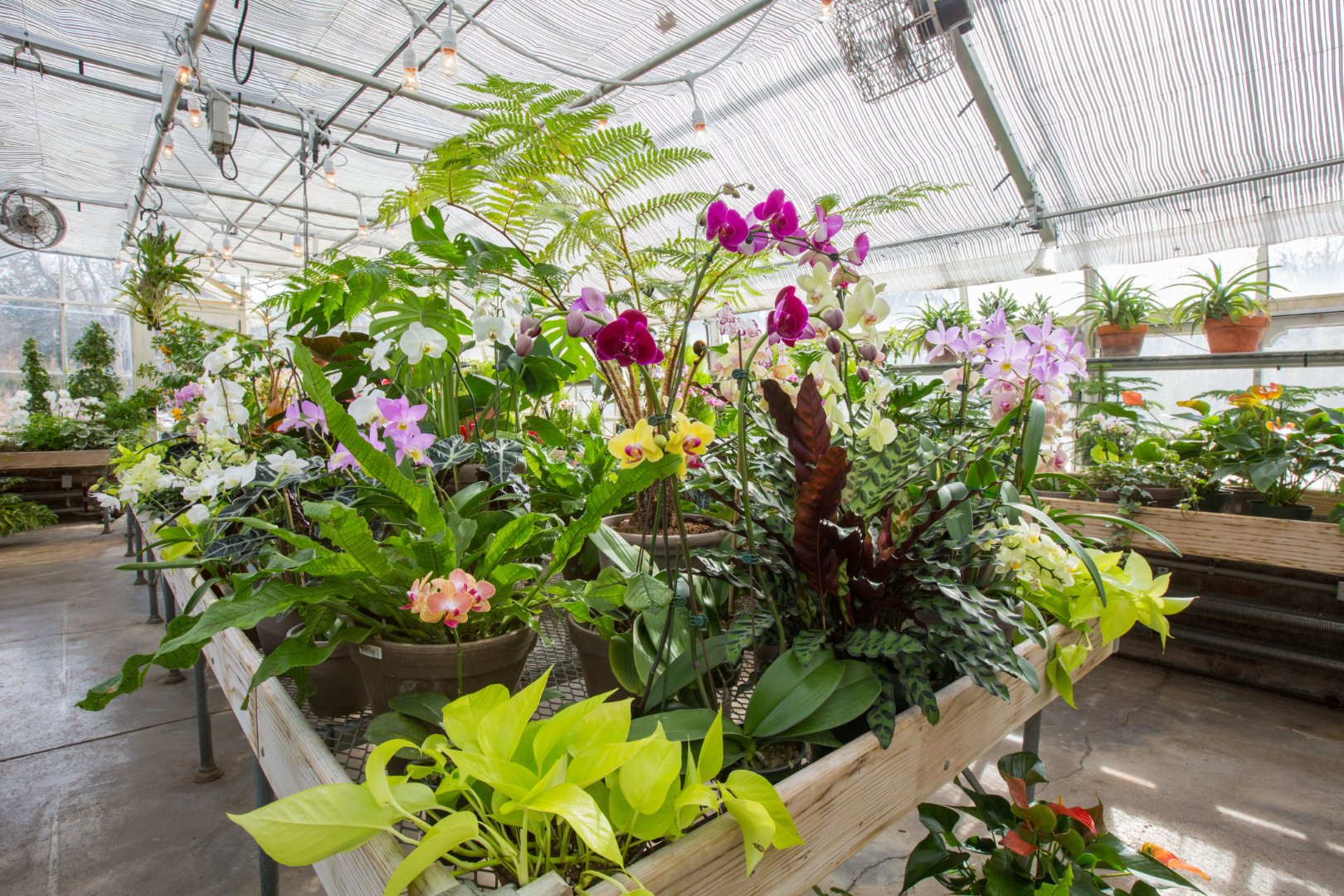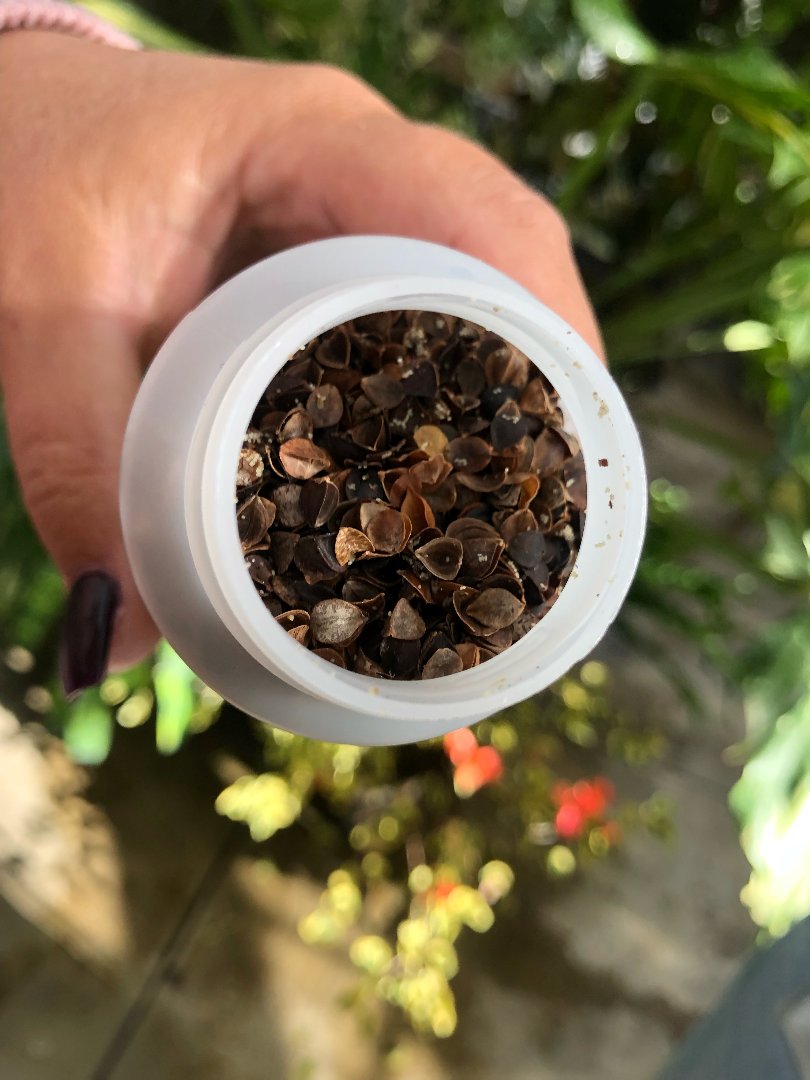Bugs don’t bug us!
Bugs can be scary, pesky little creatures—that is certainly true here at Newfields during the harvest season. You’ll find creepy crawly creatures tucked away in dark corners of Lilly House and eight-legged arachnids scampering across Woodstock Bridge. You’ll find giant, carnivorous plants peering out of the Madeline F. Elder Greenhouse, their white teeth glowing in the evening light. There is even a collection of real insect-eating plants: Venus flytraps, pitcher plants and sundews, all tended by Marian Keith, Greenhouse Coordinator.
As you can imagine, the Elder Greenhouse is a perfect place to live, it was quite literally designed to support life through a long, cold, Indiana winter. This is great for the living collection, but it’s also the perfect environment for bad bugs to thrive. Mealybugs, spider mites and scale are all familiar pests. Not only do they chow down on orchids, bromeliads, and other tropical plants but they may also carry diseases that could threaten the collection if left unchecked. Sue Nord Peiffer, Greenhouse Manager, and her team are adopting a new strategy for pest control, by introducing good bugs, or “biological control agents”, to the greenhouse to save the day by gobbling up pests.

In FLY the good bugs! They arrive on Tuesday mornings, by FedEx.
If you think back to high school biology, you may recall the three types of symbiotic relationships; mutualism, commensalism, and parasitism. In mutualism, both parties benefit from each other, in commensalism, one benefits and the other remains neutral, and finally, in parasitism, one party benefits and the other is harmed. What is happening in the greenhouse is a classic case of parasitism—the good bugs eat the bad bugs. For example, mealybug destroyer (Cryptolaemus sp.) are sustained by mealybugs and scale.
The greenhouse team has been using integrated pest management (IPM) to control the inevitable pest issues for decades. Primarily, using a combination of products, including traditional pesticides, soaps and oils and assorted methods to spot treat pest outbreaks. Many volunteer hours have been spent manually removing pests from individual plants with cotton swabs. While this strategy is successful in maintaining the pest population, it is time for a change.
In alignment with Newfields’ sustainability goals, the greenhouse team has been weening off traditional pest control practices and leaning into greener products, including biologicals. With help from Plant Products, a member of Biobest Group.

This October, Elder Greenhouse received the first shipment of “good bugs”, including mealybug destroyers, that have been released and have already gotten to work. Look closely at the image above and you will see tiny white specks scattered about the mulch-like material. Those are the mealybug destroyers when they arrived. Throughout the cooler months and with the help of the biologics supplier, Plant Products, Sue Nord Peiffer and Ian Wilhite, Orchid Specialist, will continue to maintain and balance the population of biologicals and pests. If all goes well, by springtime, bugs won’t bug us!
The Madeline F. Elder Greenhouse is open during museum hours through December. Greenhouse experts are always available to answer your questions and give tours of the living collection. Ask them about the bugs! While you’re at it check out Greenhouse Assistant, Sandy Schipp’s imaginative carnivorous plant sculptures, pictured above. They are made from the same pumpkins as the jack-o-lanterns glowing in the Pumpkin Path of Peril during Harvest Nights presented by JPMorgan Chase.
If you haven’t made it to Harvest Nights yet, there are still tickets available for this weekend— get them soon though so you don’t get ghosted. The Greenhouse isn’t open during Harvest Nights but you’ll get to see the carnivorous creatures illuminated from the outside and you’ll even have the opportunity to stomp on scurrying spiders just before crossing Woodstock Bridge. The brand-new interactive feature was designed by Blockhouse Productions out of Bloomington, Indiana and is certainly a favorite new spooky addition. No matter when you come to Newfields, you’ll be greeted by friendly insects in The Garden, we hope to see you at the Madeline F. Elder Greenhouse or Harvest Nights soon.

EXHIBITION CREDITS:
Harvest Nights is presented by JPMorgan Chase. Lead support is provided by Corteva Agriscience. Generous in-kind support is provided by Blockhouse Studios, Sunbelt Rentals, and Sun King Brewing. Additional support is provided by Fleetwatcher LLC, Marian Inc., and Mays Chemical Company. Support for Art-or-Treat weekend is provided by Barnes & Thornburg LLP, BLICK Art Materials, Delta Dental, and Priority Press. Harvest Nights is made possible by a grant from Lilly Endowment Inc. through its initiative, Strengthening Indianapolis Through Arts and Culture Innovation.
IMAGE CREDITS:
Installation views of the Madeline F. Elder Greenhouse at Harvest Nights, 2022.




